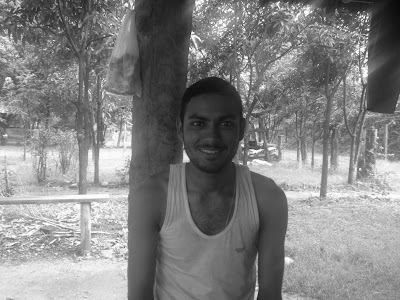This post is at Facebook (along with other updates not at this blog site) if you wish to comment.
A hundred times a year I get asked how big is a leopard's territory. There's a simple answer. It varies. It varies because there are so many variables. One of those variables is the presence of other top predators, such as tiger.
While on my rounds today I found sign of both leopard and tiger, about three kilometres apart but heading towards each other. The tiger pug marks were interesting because it looked like a male and female were spending time together. Leopards avoid tigers as much as they can and a pair of stripeys romancing spells double trouble for the spotted cat. Every day I attempt to piece together coexistence clues. Here in Bardia there is every indication that the larger and growing tiger population has pushed leopard to the fringes, this can of course mean that leopards are more likely to be living closer to human settlements, which they do.
But it's important not to generalize with big cats. Known behaviour of panthera species as a whole can help guide a situation but another one of those variables is the individual characteristics of any given leopard or tiger.
Pug marks to me are fodder for info collection but also fodder for the soul, I just like seeing them. I don't need to see the cat itself, (although I do have visual contact with them quite a lot I guess), I just need to know they are there, I'd rather not disturb them to be honest. There are of course those times in serious conflict situations when pug marks are part of a tragic story, sometimes that can actually be a little bit chilling, seeing those footprints.
Today though was more about learning about an area and the big cat movement in it, just how much time a leopard I am tracking spends in denser tiger territory, this stuff is important as we understand how this affects our own coexistence with these animals...







































